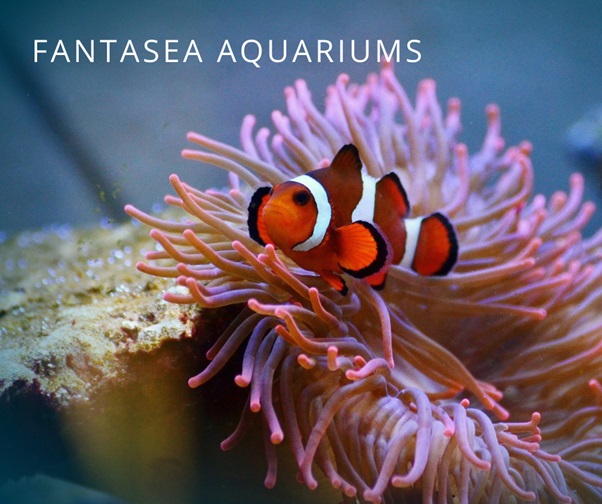Before you add any fish to your aquarium, it’s important to consider the diet of the species you’re interested in. After all, some fish don’t eat as readily as others or have more complicated diets, making them unsuitable for beginners. Luckily this is not the case with clownfish!
So what does a clownfish eat? Let’s go into clownfish diet in the wild and in captivity, as well as how often and how much you should feed.
What does a clownfish eat in the wild?
Wild clownfish belong to the genera Ampiphrion and Premnas. They naturally occur in the Indian ocean, where they maintain symbiotic relationships with anemones. Part of their nutrition is provided by the anemone in the form of foods that get stuck in the tentacles. They’ll sometimes even take a bite out of the tentacles themselves.
Aside from what they can pick off their host, wild clownfish are omnivores that basically eat whatever they can find. They mainly live off zooplankton, a wide range of tiny creatures that float through the water column. This can include copepods, all sorts of larvae, fish eggs, small shrimp and more. They also feed on algae, though to a lesser degree.
What does a clownfish eat in the aquarium?
The fact that clownfish have such a varied diet in the wild (and are rather voracious!) is good news for aquarists. Unlike with some fish species, you really shouldn’t have any issues with getting your clown to eat. Additionally, they’re usually not very picky about what they consume either!
You can feed this species once a day, though it should be more if you’re planning on breeding clownfish. You can also consider twice or three times a day for juvenile specimens.
There are a whole bunch of different foods to try: high-quality marine pellets or flakes, (thawed) frozen foods like mysis, cyclops, brine shrimp, krill and more, live food like brine shrimp and vitamin-soaked freeze-dried food. For the veggie side of things, seaweed sheets (nori) and the occasional algae tab will work well if your clownfish are interested in them.
Tip: If you only just introduced your new clownfish to your aquarium, don’t worry if they don’t want to eat at first. Give them a few days to adjust and just keep trying daily!

How much do clownfish eat?
As for quantity, first off, don’t fall for begging behavior. Your clownfish will learn to recognize you as the entity that feeds them and eventually start responding pretty enthusiastically to your presence! It’s important to remember that fish really don’t need that much food; overfeeding can lead to issues with water quality.
A commonly used trick for figuring out how much to feed is the eyeball method: feeding about as much as the size of the fish’s eye a day. That means a few pellets (probably 4-8) per fish, or a few pieces of frozen food. If you feed multiple times a day, cut the portion size in half. If your clownfish can’t finish its meal in a few minutes or leaves some of its food, consider feeding less next time.
If you’re worried you’re not feeding your clownfish enough or it’s not getting enough food, take a peek at its belly. It should be plump but not fat (although it can bulge a bit right after feeding). If the stomach looks sunken in, this means your fish is on the skinny side, which can be caused either by underfeeding or parasites.
What does a baby clownfish eat?
Clownfish larvae and very small clownfish are challenging to feed due to their size. Most aquarists feed rotifers at first, which means you’ll have to have a culture of these tiny critters set up before your clownfish eggs hatch. Later, you can switch to very fine fry foods and then crushed pellets or flakes.
If you’d like to find out more about breeding clownfish and feeding the fry, have a look at the guide to clownfish breeding.
Conclusion
A beautiful aquarium filled with colorful clownfish is a joy to see. If you’d like to brighten up your office or home, we can help! You can have your own clownfish tank without ever getting your hands wet. Just contact FantaSEA Aquariums here with your ideas so we can design, set up and maintain it for you.




